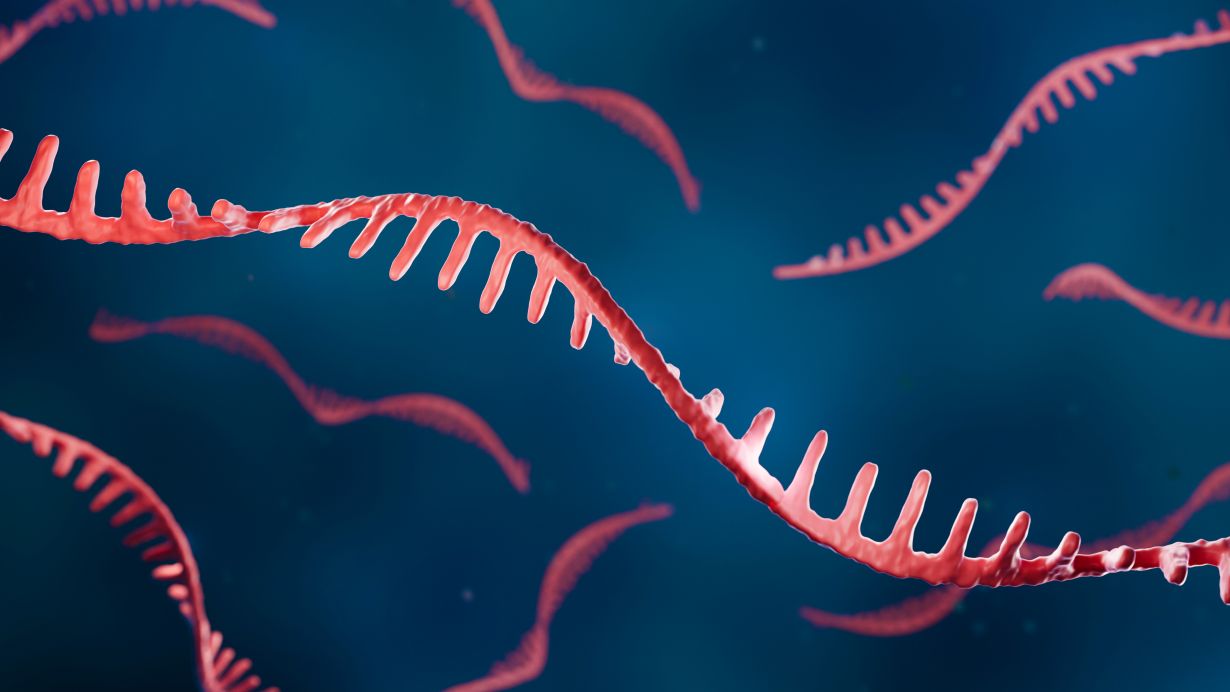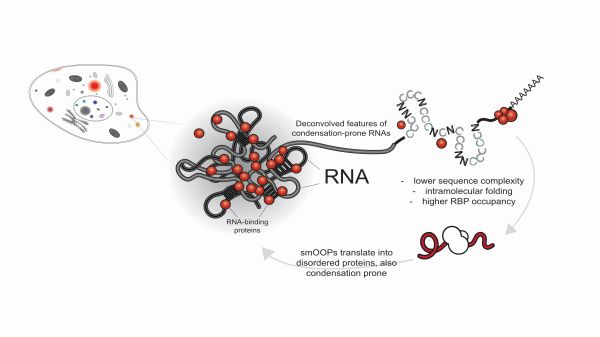
Inside cells, RNAs and proteins form tiny, liquid-like droplets called biomolecular condensates. These droplets are essential for organizing cellular life, yet why some RNAs cluster more readily than others has remained unclear. Disruptions in condensate formation are linked to developmental defects, cancer, and neurodegenerative diseases. Researchers at Karlsruhe Institute of Technology (KIT) have now identified a new class of RNA called smOOPs and gained a better understanding of how biomolecular condensates form. The findings were published in the journal Cell Genomics. (DOI: 10.1016/j.xgen.2025.101065 )
Within human cells lies a dynamic interior. Biological condensates act as organizational hubs, supporting a wide range of cellular functions from gene regulation to stress responses. "These biological condensates are accumulations that arise through phase separation, a process in which molecules segregate from their surroundings - much like how oil separates from water", Professor Miha Modic from the Zoological Institute at KIT explains. "Inside cells, this process causes RNA and proteins to form distinct membrane-less droplets."
In a new study, conducted in collaboration with researchers from the National Institute of Chemistry in Slovenia and The Francis Crick Institute, Modic's team combined experimental analyses with deep learning to determine which RNAs tend to cluster during condensate formation. Using this approach, the researchers identified a previously unknown RNA class active during early development and called them smOOPs (semi-extractable and orthogonal organic phase separation-enriched RNAs).

was identified by their unique sequence and
structural features (figure: Klobučar et al.)
Sticky RNAs influence cellular organization
"During early development, each cell state expresses a distinct set of condensation-prone RNAs. These RNAs 'tune' or scaffold the phase-separation landscape of that cell," says Modic. "We have discovered that smOOPs are unusually "sticky", highly cell-type specific, and are present during early development. They resist standard RNA extraction methods and are heavily bound by RNA-binding proteins." Moreover, the researchers observed that smOOPs cluster visibly within cells and are more interconnected than expected, demonstrating that they naturally prefer to condense inside cells.
Using deep learning, the researchers found that smOOPs share distinctive features; long transcripts with lower sequence complexity, strong internal folding, and characteristic protein-binding patterns. It was found that the proteins encoded by these RNAs also tend to contain long, flexible segments, that also promote condensation. "This indicates an intriguing interplay between RNA- and protein-based features in phase separation, says Modic. "The discovery of smOOPs not only expands our understanding of condensation-prone RNAs but also demonstrates how combining biochemical experiments with deep machine learning can reveal the hidden logic of life's molecular networks".
New clues on condensate formation guides further research
Investigating how cells maintain their internal organization is crucial for understanding our biology. "Both RNA and protein contribute to condensate formation. That coupling becomes particularly relevant in development. When this machinery malfunctions it causes diseases", explains Modic. "By identifying smOOPs and their RNA-RNA interaction network, we now have a conceptual and mechanistic framework to interpret pathogenic condensates in disease."
Original publication
Klobučar, T., Novljan, J., Iosub, I. A., Kokot, B., Urbančič, I., Jones, D. M., Chakrabarti, A. M., Luscombe, N. M., Ule, J., Modic, M.: Integrative profiling of condensation-prone RNAs during early development. Cell Genomics. DOI: 10.1016/j.xgen.2025.101065
More about the KIT Center of Health Technologies
In close partnership with society, KIT develops solutions for urgent challenges - from climate change, energy transition and sustainable use of natural resources to artificial intelligence, sovereignty and an aging population. As The University in the Helmholtz Association, KIT unites scientific excellence from insight to application-driven research under one roof - and is thus in a unique position to drive this transformation. As a University of Excellence, KIT offers its more than 10,000 employees and 22,800 students outstanding opportunities to shape a sustainable and resilient future. KIT - Science for Impact.






